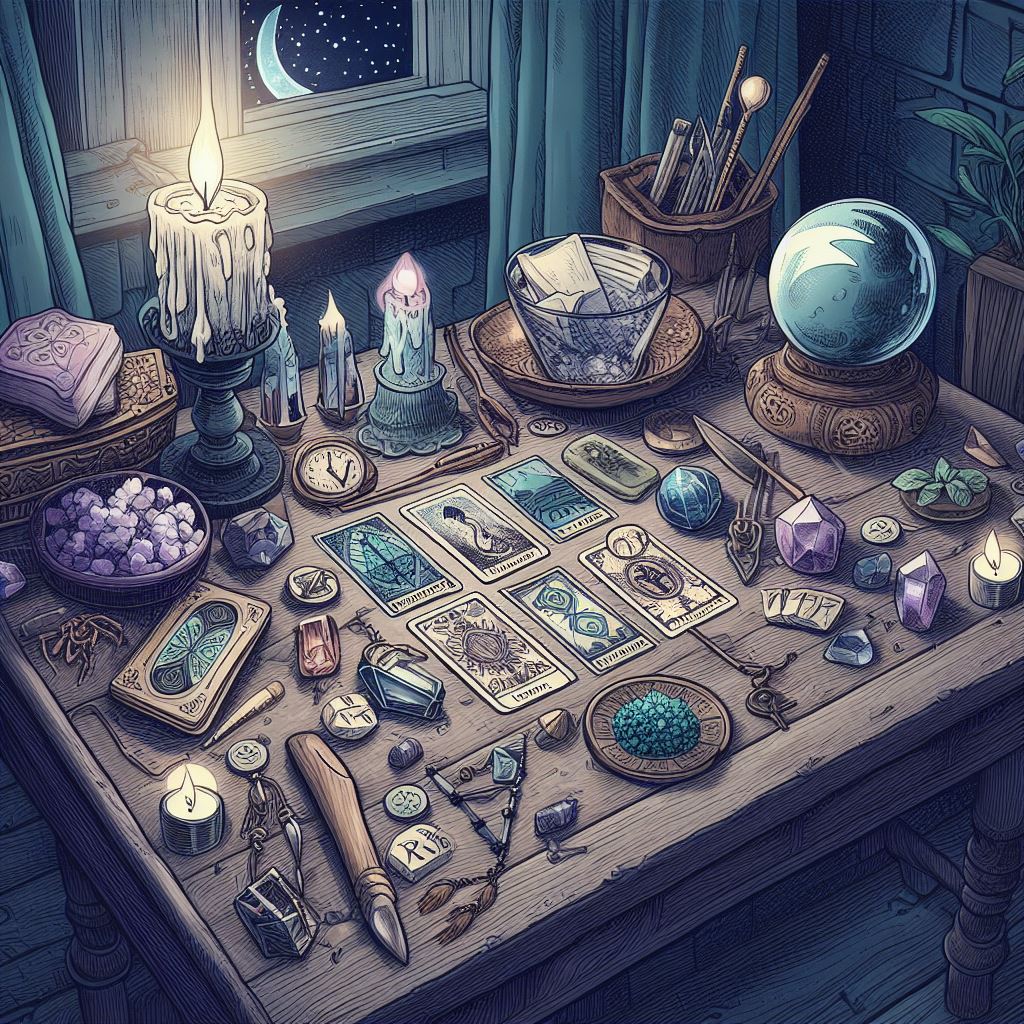Creating your own spells is a deeply personal journey into the world of magick, allowing you to connect with your innermost desires and the energies of the universe. This guide is designed to help you understand and master the art of spell crafting, from setting your intentions to performing the ritual.
Understanding the Intent of Your Spell
The first and most crucial step in crafting a spell is defining its intent. The intent should be clear and focused because it directs the energy of your spell. Start by asking yourself what you hope to accomplish.
Are you seeking protection, love, prosperity, or maybe spiritual insight? Your intention doesn’t just guide the choice of ingredients and timing; it also aligns your energy with your desired outcome.
Consider writing down your intention. This not only clarifies your thoughts but also strengthens your commitment to the spell. For example, if your intent is to attract love, be specific about what kind of love you are seeking—is it romantic, self-love, or unconditional love from the universe?
Lastly, it’s important to ensure that your intent aligns with your ethical beliefs. Magick should be practiced responsibly and respectfully, taking into account the free will of others and the repercussions that can come from manipulating energy carelessly. Always ask yourself if the spell is for the highest good of all involved and remember that the most effective spells are those that harm none.
Choosing Your Spell Components
Once you have a clear intent, it’s time to gather your spell components. These can be anything that resonates with the purpose of your spell, such as herbs, crystals, colors, and even sounds. Each component carries its own vibrational energy and can enhance the potency of your spell.
Herbs are commonly used in spellwork for their natural energies. For example, basil can draw in prosperity and soothe tempers, making it perfect for spells related to money and peace. When choosing herbs, consider their traditional uses and how those align with your intentions. Always handle your herbs with respect, acknowledging their contribution to your spell.
Crystals are another powerful component in spells. Each crystal has unique properties—rose quartz fosters love, amethyst promotes healing, and black tourmaline offers protection. When selecting crystals, you might also consider their colors as these can correspond to specific chakras or energies you want to work with.
In addition to herbs and crystals, you can use symbols or sigils, words, or even items that hold personal significance. These could be family heirlooms, photographs, or anything that strengthens the personal connection to your intent. The more personal your components, the more tailored and powerful your spell will be.
Timing Your Spell for Maximum Effectiveness
Timing can play a crucial role in the success of your spell. By aligning your spellcasting with certain days, times, or astrological events, you can tap into natural energies that amplify your work.
Days of the week, for example, are ruled by different planets, each offering unique energies. Casting a love spell on a Friday (day of Venus) or a career spell on a Wednesday (day of Mercury) harnesses the specific planetary energies that correspond to your spell’s intent.
The phases of the moon also impact spellwork. The new moon, representing new beginnings, is ideal for initiation spells or setting new goals. The full moon, with its powerful energy, is perfect for charging tools or conducting divination. Aligning your spell with the moon phases can greatly enhance your results.
Lastly, consider the zodiacal positions and other celestial events. For instance, spells for rapid growth and courage are potent when the moon is in Aries. If you are working on transformation, you might wait for the moon to enter Scorpio. Be mindful of retrogrades and eclipses, as these can alter the typical flow of energy and affect the outcome of your spellwork.
Performing Your Spell
When it comes time to cast your spell, preparation is key. Start by creating a sacred space. This might involve cleansing the area with sage, setting up an altar, or simply declaring the space sacred. Your spellcasting area should be a place where you can focus and feel connected to the energies you wish to invoke.
During the spellcasting itself, your focus and emotions are as important as the physical components. Visualize your intention clearly and build up your emotional energy to charge the spell. You might use chants, movements, or visualization techniques to raise energy. Remember, the power of a spell often comes from the energy raised during its casting, so maintain a clear focus and strong intent.
Lastly, close your spell with gratitude. Thank the elements, spirits, or deities you invoked, acknowledging their assistance in your magickal work. Ground any leftover energy by imagining it returning to the earth. This not only helps to stabilize your own energy but also marks the end of your ritual, sealing the spell with your intent and respect.
By following these detailed steps, you can craft spells that are not only effective but also deeply meaningful. The process of creating your own spells is not just about the outcome but about connecting with the magickal world around you, understanding your own power, and respecting the natural order.
Documenting Your Spell and Reflecting on Its Outcomes
Once your spell is complete, it’s beneficial to document the process and the results. Keeping a magickal journal or a Book of Shadows where you record your spells, ingredients, timings, and outcomes serves as a valuable tool. This documentation can help you refine your practice over time, showing you which components and timings work best for you and which intentions are most effectively manifested.
Review your spell after it has had time to work. Has anything changed? How do you feel energetically? It’s possible the spell may manifest in unexpected ways. Be open to signs and messages from the universe. Sometimes, the outcomes are subtle or take time to fully reveal themselves.
If a spell doesn’t work as expected, consider possible reasons why. Reflect on your state of mind, the timing, and the components used. Maybe the intent was not clear enough, or perhaps external factors influenced the outcome. Use this reflection to learn and improve future spells.
Continuing Your Magickal Education
Spellcraft is an art that grows with you over time. Continue learning and experimenting with different techniques, ingredients, and timings. There are many resources available, from books and online courses to local workshops and magickal communities. Engaging with other practitioners can provide new insights and inspiration.
Additionally, explore other aspects of magick, such as divination, meditation, and ritual work, to enhance your understanding and abilities. Each practice can inform and enrich your spellcraft, leading to more nuanced and powerful magick.
By embracing the principles outlined in this guide, you are on your way to becoming a thoughtful and powerful practitioner of magick. Remember that each spell you cast is an expression of your unique spirit and connection to the universe. Trust in your abilities, remain open to learning, and always respect the energies you work with.
















